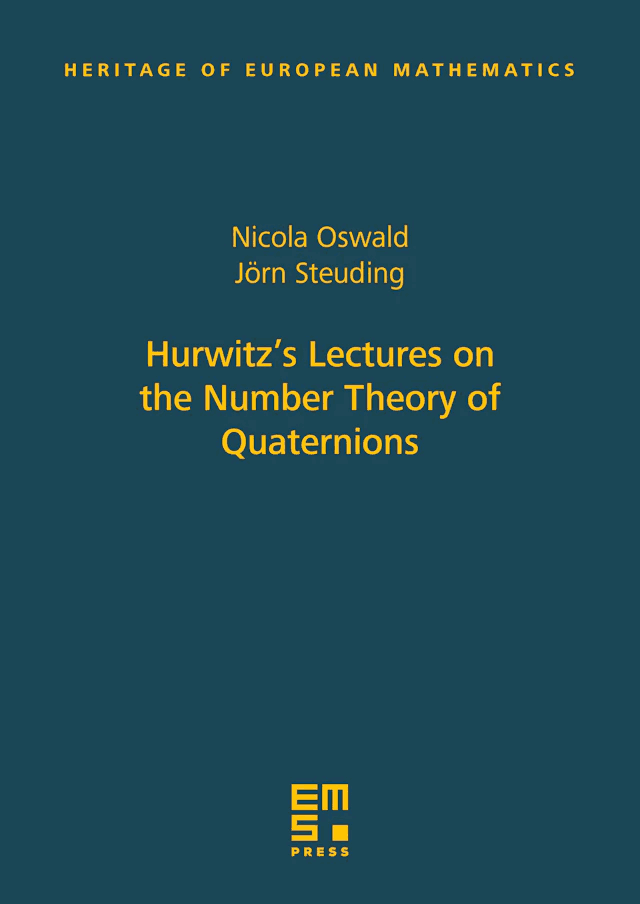All rights reserved.
Adolf Hurwitz published his pioneering work Vorlesungen über die Zahlentheorie der Quaternionen in 1919, just before his death. In this remarkable booklet, he sought to make the number-theoretic aspects of quaternions widely accessible and to encourage his (younger) colleagues to engage in further research.
Just over a hundred years later, Nicola Oswald and Jörn Steuding have translated, edited, and commented on Hurwitz’s work in Hurwitz’s Lectures on the Number Theory of Quaternions with largely the same goal in mind: to make these lectures broadly accessible. To further this goal, they also supplement their close reading with a concise and contextualized introduction to topics in algebraic number theory.
Hurwitz’s lectures establish, essentially from scratch, the foundations of the arithmetic of quaternions. Within the notation and framework of his time, Hurwitz meticulously defines integer quaternions and establishes notions analogous to those of the usual integers, like greatest common divisors, ideals, and (noncommutative) prime factorization. An important distinguishing feature of the quaternions is their norm, the sum of four squares; the fact that it is multiplicative proves Euler’s four-square identity. This treatment culminates in his elegant proof of Lagrange’s theorem—that every non-negative integer can be represented as a sum of four integer squares—and a quaternionic solution to Euler’s problem of finding magic squares of squares.
The book is carefully organized to guide readers, spread over seven parts and an appendix. After a short introduction in Part I, the translation of and commentary on Hurwitz’s lectures is provided in the main Part II. In Parts III–IV and Part VI, the authors provide additional historical context. Sandwiched in between, Part V provides a translation of Hurwitz’s paper on the composition of quadratic forms, where he proves that an identity , where each is a bilinear form in the variables , exists if and only if . Part VII concludes with a short epilogue, and a short appendix covers “Elementary Number Theory in a Nutshell.”
Hurwitz’s Lectures will be enjoyed by mathematicians with an interest in the historical development of algebraic number theory, as well as by students interested in these topics, because of the very few prerequisites. The book illuminates Hurwitz’s contributions to the study of quaternions and provides a connection to modern theory, proving the enduring value of bridging classical inquiry with contemporary mathematical exploration—a fitting scholarly tribute, indeed.
Nicola Oswald and Jörn Steuding Hurwitz’s Lectures on the Number Theory of Quaternions EMS Press, 2023, 311 pages, Hardcover ISBN 978-3-98547-011-2, eBook ISBN 978-3-98547-511-7
Cite this article
John Voight, Book review: “Hurwitz’s Lectures on the Number Theory of Quaternions” by Nicola Oswald and Jörn Steuding. Eur. Math. Soc. Mag. 132 (2024), p. 67
DOI 10.4171/MAG/196
